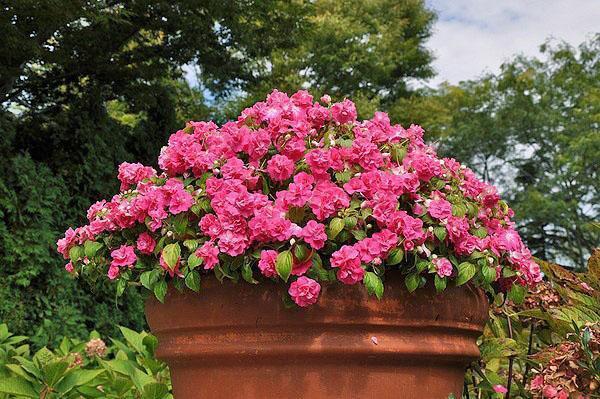Fertilizers for balsam
 Balsam is a beautiful indoor flower that can grow to enormous sizes. An adult formed flower occupies a 25 liter pots and reaches a height of up to 0.5 m. Up to 30 buds are formed in such a plant, and the flower size reaches 5 cm. Depending on the variety of balsam, its flowers can be red, pink or white. For abundant flowering, balsam must create suitable conditions: extend the daylight hours to 12-15 hours, transplant the flower into a new planter as the root system grows, and regularly fertilize the soil.
Balsam is a beautiful indoor flower that can grow to enormous sizes. An adult formed flower occupies a 25 liter pots and reaches a height of up to 0.5 m. Up to 30 buds are formed in such a plant, and the flower size reaches 5 cm. Depending on the variety of balsam, its flowers can be red, pink or white. For abundant flowering, balsam must create suitable conditions: extend the daylight hours to 12-15 hours, transplant the flower into a new planter as the root system grows, and regularly fertilize the soil.
Chemicals can be used, but if you are a supporter of organic farming, then you need to choose the right mulch and fertilizer. Consider several organic fertilizerssuitable for natural farming.
Read the article: how to properly care for garden balsam?
Fertilizer "H & H"
Fertilizer "H&H" is a natural nitrogen fertilizer. Its basis is coarsely ground bone meal made from hoof meal. Such fertilizers have the longest effect. Vermicompost or manure completely decomposes in three days after application to the soil. A fertilizer based on hoof meal decomposes within two to three weeks due to the action of microorganisms. Bacteria that feed on bone meal release a large amount of heat during their life. Because of this, the balsam root system develops faster. Hoof meal decomposes very slowly, therefore, after fertilizing the soil, an excess of nitrogen is impossible.
It is necessary to apply fertilizer to the soil when transplanting balsam into a new pot. By this time, the flower will dissolve the buds, but thanks to the bacteria in the fertilizer, the plant will tolerate the transplant well.
In warm soil, the balsam root system develops faster. In combination with "H & H", it is necessary to apply phosphorus fertilizers to the soil.
Bone meal and soil mulching
You can use regular bone meal instead of factory fertilizer. Besides a nitrogen source, bone meal is a good source of phosphorus, but when applying it, you must observe the dosage of fertilizer. Since bone meal decomposes evenly, there is a risk of nitrogen overdose.
To reduce the effects of an overdose, the soil must be mulched, and the balsam must be watered regularly. Then the nitrogen concentration and the risk of overdose will decrease.